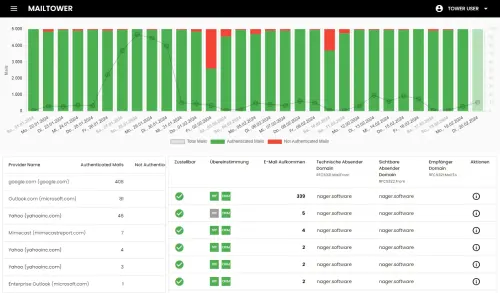User experience
Navigating Mail Tower's dashboard feels intuitive, with a well-organized layout that makes finding specific reports and settings straightforward. The visualization of DMARC data, like authentication rates and threat intelligence, is clear and actionable. It helps us quickly grasp the security posture of our email domains.
Setting up new domains and configuring DMARC policies is a streamlined process. While it offers advanced features, the interface doesn't feel overly complex. We appreciate the ability to easily filter and drill down into data, which is essential for troubleshooting and making informed decisions.
DMARC Monitor presents a clean and uncluttered user interface, prioritizing ease of use for its core DMARC functions. The dashboard offers a quick overview of DMARC compliance, which is great for daily checks. Getting started with adding a domain and receiving reports is relatively simple.
However, we found that for more in-depth analysis or managing a large number of domains, the interface could sometimes feel less robust compared to Mail Tower. While it serves its primary purpose well, the options for advanced customization or specialized reporting are somewhat limited.











































 0 / 5(0)
0 / 5(0)
 0 / 5(0)
0 / 5(0)



